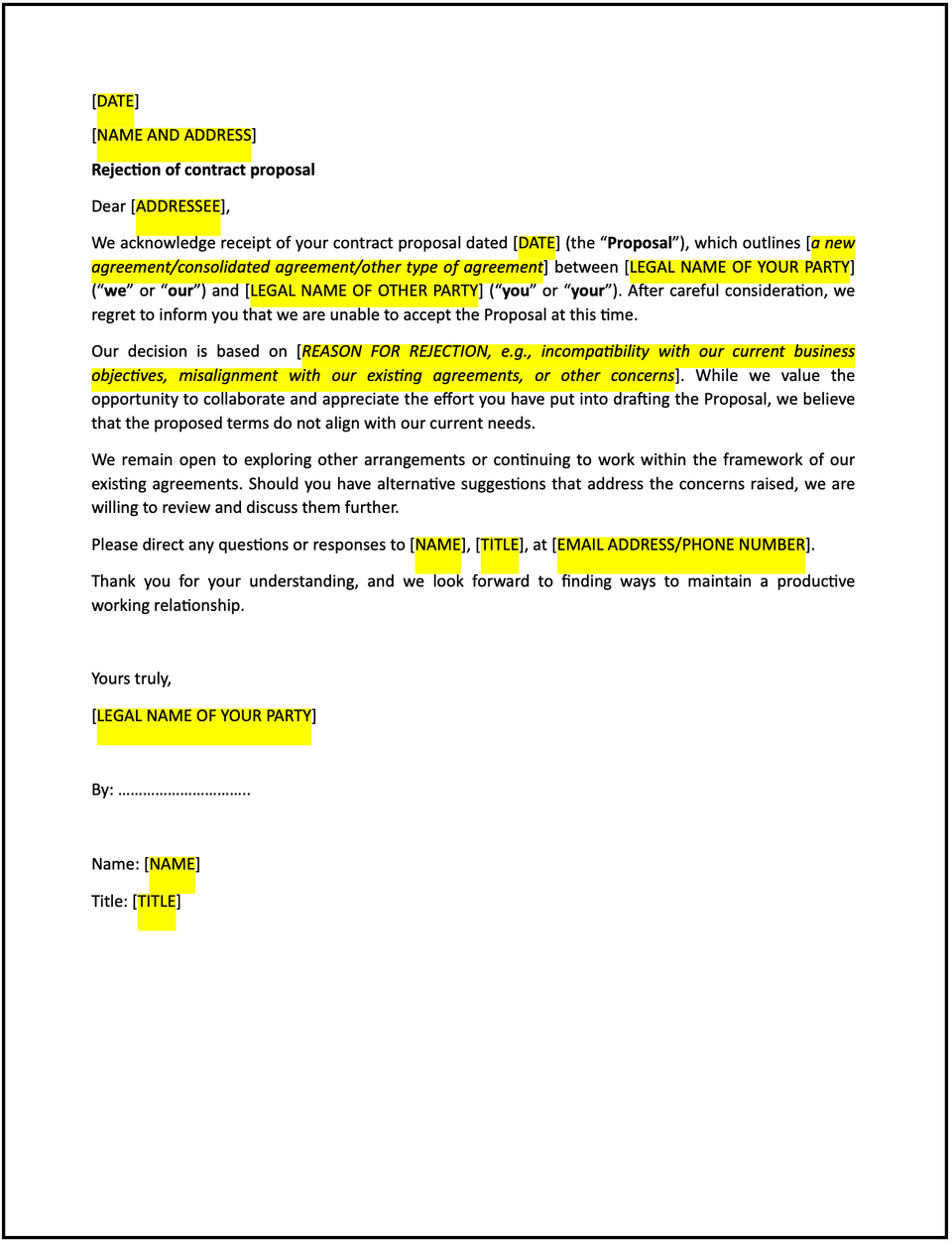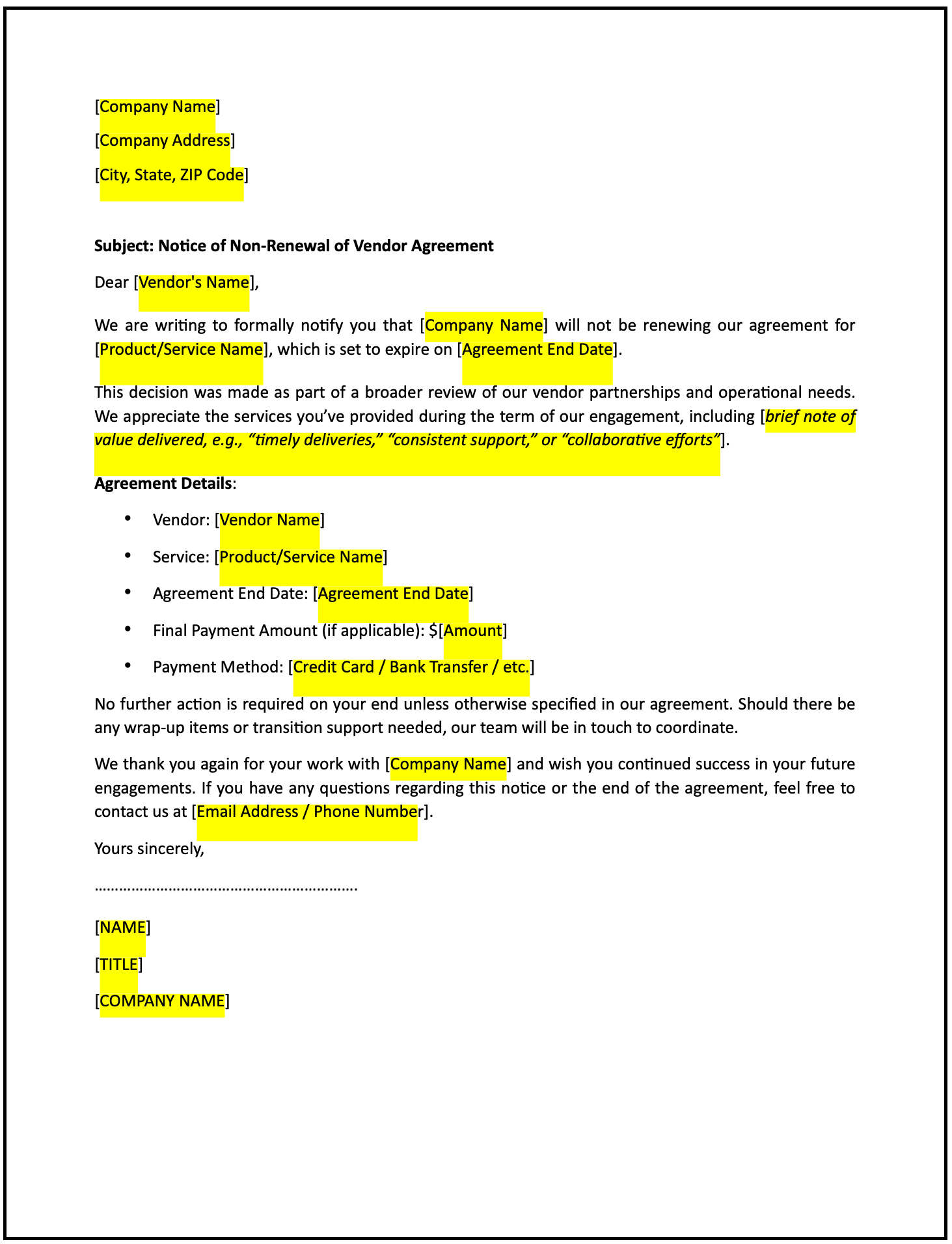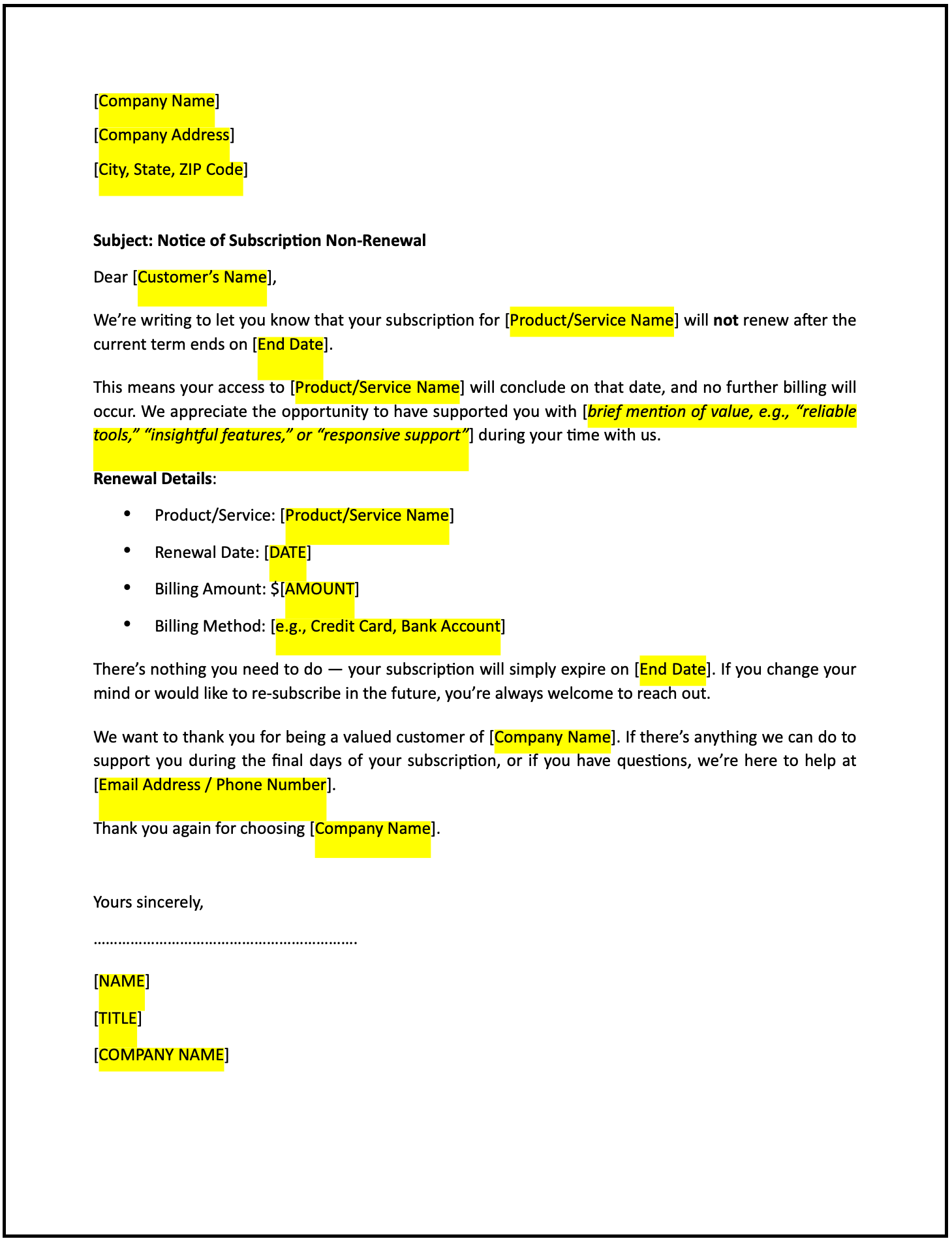Rejection of contract proposal letter: Free template

Rejection of contract proposal letter
Rejecting a contract proposal requires professionalism and clarity to ensure the other party understands your decision while maintaining a positive relationship. This letter provides a respectful way to decline the proposal, explain your rationale, and leave the door open for future opportunities, if applicable.
How to use this rejection of contract proposal letter
- Reference the proposal: Clearly identify the proposal being rejected, including its title, reference number, and the parties involved.
- State the rejection: Explicitly state your decision to decline the proposal, ensuring clarity and directness.
- Provide a rationale: Briefly explain the reasons for the rejection, focusing on factual and business-related grounds without unnecessary detail.
- Maintain professionalism: Use a respectful and considerate tone to preserve goodwill and avoid unnecessary conflict.
- Offer future opportunities: If appropriate, express interest in exploring alternative proposals or collaborating in the future.
- Request acknowledgment: Ask the other party to confirm receipt of the letter for clear communication.
Benefits of using a rejection of contract proposal letter
This letter template ensures a clear and professional way to decline a contract proposal while maintaining transparency and goodwill. Here’s how it helps:
- Provide clarity: Clearly stating the rejection prevents misunderstandings or false expectations.
- Maintain professionalism: A respectful tone preserves the relationship and leaves room for future collaboration.
- Demonstrate accountability: Providing a rationale shows thoughtfulness and transparency in decision-making.
- Minimize disputes: Addressing the rejection professionally reduces the likelihood of conflict.
- Provide documentation: The letter serves as a formal record of your decision, which can be useful for reference.
Tips for writing an effective rejection of contract proposal letter
- Be specific: Clearly reference the proposal to avoid ambiguity about the subject of the rejection.
- Focus on business rationale: Provide clear, factual reasons for the rejection without being overly critical.
- Use professional language: Maintain a respectful and considerate tone to preserve goodwill.
- Offer constructive feedback: If applicable, suggest areas for improvement or alternative options for future consideration.
- Keep it concise: Focus on the key points and avoid unnecessary details or commentary.
Frequently asked questions (FAQs)
Q: What details should I include in this letter?
A: Include the proposal reference, the decision to reject, a brief rationale, and any suggestions or invitations for future collaboration.
Q: Should I provide specific reasons for the rejection?
A: While not always required, offering a concise and factual explanation demonstrates professionalism and transparency.
Q: Who typically receives this letter?
A: Send the letter to the individual or team that submitted the proposal, typically their legal or business representatives.
Q: How formal should this letter be?
A: The tone should be professional and respectful, reflecting the importance of the decision.
Q: When should this letter be sent?
A: Send the letter promptly after making the decision to ensure clear and timely communication.
Q: Can this letter suggest alternative terms?
A: Yes, if applicable, you can include suggestions for revised terms that may be acceptable in the future.
Q: Is acknowledgment from the other party required?
A: While not legally required, requesting acknowledgment ensures alignment and clear communication.
This article contains general legal information and does not contain legal advice. Cobrief is not a law firm or a substitute for an attorney or law firm. The law is complex and changes often. For legal advice, please ask a lawyer.


